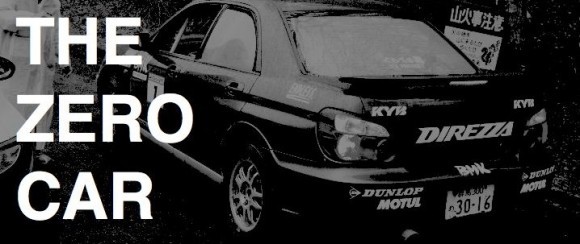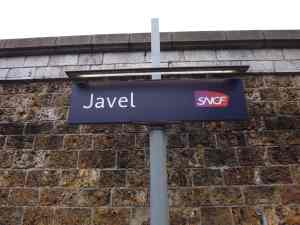Human geography at high school encompassed a fairly limited syllabus. You did three things – population demographics, development, and urban regeneration – and that was about it. Urban regeneration nearly always entailed a case study of looking at somewhere in the world where there had been industrial decline, and where someone had subsequently come in to make everything nice and shiny and pleasant again. In our school we looked at the Barbican in London, Trafford in Manchester, Gorgie in Edinburgh – but never Javel in Paris.
It’s a bit of a shame we didn’t study Javel, because even when you take out the attraction for me (which will become obvious in a minute) it’s still an interesting example of what can happen to an area when industry moves out. Now, given my training in human geography I know I’m skating on rather thin ice when it comes to uncritically viewing urban regeneration as a good thing, so rather than gushing about what a nice park I went to see I’d rather focus on the history of the area and what traces of the past are left behind.
Lying in the west of Paris on the left bank of the Seine, Javel was historically famous for two industries. The first of these was the production of eau de Javel. Significantly more hazardous to the body but somewhat more hygienic than eau de Cologne, ‘water of Javel’ is still used in everyday French parlance to describe everyone’s favourite deep cleaning product – bleach. Even I’m not mad enough to traipse halfway across a city to see the birthplace of the ancestor of Domestos, though, so it’s the second of Javel’s historical industries that is the subject of today’s attention – Citroëns.
Citroën’s association with Javel had rather grizzly beginnings, starting when André Citroën opened a munitions factory in 1915 to support the increasingly bloody conflict emerging to the north-east. After the Armistice the factory switched its attention to civilian cars, building vehicles with helical gear-driven machines that gave Citroën’s products their famous double chevron badge. Over the decades that followed, the massive thirty-acre factory on the banks of the Seine gave birth to many of France’s most iconic machines, among them the Traction Avant, 2CV, and – last of all – the DS.
Production started to move from Javel to the outskirts of Paris and beyond in the early 1970s, the factory finally closing in 1975 and demolished over the following years. In line with city urbanisation policy at the time, the massive site left behind was soon transformed into a public park replete with hothouses and landscaped gardens, whilst the Citroën name was deployed to spur business development on the riverside.
With its giant central lawn, imposing greenhouse and raised sandstone beds, Parc André Citroën would doubtless be a wonderful place to picnic of a summer afternoon. But on a cold, grey winter’s morning, the expanses of open space give the impression of desolation and soullessness. Save for a few flourescent-clad solo joggers, I appear to be the only person on the site. The lawns are dull and soggy, and no more than a handful of frosty twigs poke out of the plant beds. A big green plaque on the wall explains that the Citroën factory once stood here, yellow line drawings of cars surrounding the text. No mention of bleach anywhere.
The morning traffic roars away in the distance, and glassy skyscrapers rise out of the fog beyond. Abandoned for the time being, a large hot-air balloon is tethered to the ground close to the river. This is definitely a summer park, not somewhere for the start of December when a chilling wind whips in off the Seine and coils round the edges of the lawn.
Through the gates and under the rail and road bridges at the bottom of the park is Port de Javel Bas, lining the bank of the Seine. One can imagine that in times past this is where barges would have unloaded steel, coal and other materials necessary for the production of cars. Today there is nothing on the water aside from a floating restaurant tethered up for the cold months. In spite of its name, there is nothing remotely romantic about the Port of Javel. There are builders’ yards and cement works, pick-up trucks loading up for the day ahead. RER trains speed by on the rails, grubby sleeping bags and empty bottles in the underpasses reminding that not everyone benefits from urban regeneration. It is the kind of place where key scenes in French crime dramas are probably shot.
The Quai André Citroën proper is a wide road with concrete-and-glass office buildings separated from the Seine by a line of trees. It is here that one finds the Javel and Javel-André Citroën train stations, and some small blue signs marking this out as the part of Paris that give the nation some of its most important vehicles. There may only be a few obvious visual cues that millions of cars were produced within this square kilometre, but the Citroën name is indelibly burned into the built environment in this quarter of Paris.
Fifteen minutes’ walk away, however, there is one tiny physical remnant of the area’s past – an old showroom on Place Etienne Pernet. Stretching along the ground floor of an old block of flats, red cast-iron letters above the windows spell out ‘Usine Citroën – Département Occasions’ – ‘Citroën Factory – Sales Division’, if you will. Inside is an essentially standard Citroën showroom of the kind found across the world, but back in the day this would have essentially been a quasi-official factory outlet for new and used cars alike.
Ironically this retro showroom is part of the Felix Faure group of dealerships, Felix Faure being the French president who, when invited to view his country’s cars at the turn of the century, denounced them as hopeless and ugly. Had he lived to see what unfolded near to the showroom that now happens to bear his name, he would have seen his judgment on French cars proven half-wrong. Hopeless, certainly, but ugly? Certainly not.



























Reblogged this on Leslie Mabon and commented:
Latest post from the ‘new’ blog – with best wishes for the festive period!